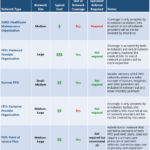Understanding Fee-for-Service: How Pay-Per-Service Healthcare Works

What Is a Fee-for-Service Payment System in Health Care?
The fee-for-service (FFS) payment system is a longstanding and widely used model in health care, where providers-such as doctors, hospitals, and clinics-are paid separately for each individual service or procedure they deliver. Under this approach, every consultation, diagnostic test, surgical procedure, or treatment generates a distinct bill. The payment is made either by the patient, their insurance company, or a government health program, depending on the specifics of the coverage and the service rendered [1] [2] .
How Fee-for-Service Works: Step-by-Step Process
The FFS model operates through a three-part cycle:
- Provision of Services: A healthcare provider delivers a specific service, such as a medical consultation, blood test, x-ray, or surgery. Every service is considered unique and billable [1] .
- Itemized Billing: Each service is documented and itemized on a bill. This means that, for example, a single hospital visit could result in multiple charges for the physician visit, lab tests, imaging, and procedures [2] .
- Payment: The bill is submitted to the payer, which could be the patient, their insurer, or a government agency like Medicare or Medicaid. Payments are then processed, with insurance typically covering a portion and the patient responsible for copayments or deductibles [1] .
Real-World Example: Fee-for-Service in Action
Consider a patient who visits their primary care physician due to persistent headaches. During the visit, the physician orders blood tests and an MRI scan. Under FFS:
- The physician charges a consultation fee.
- The laboratory charges separately for each blood test performed.
- The imaging center bills independently for the MRI scan.
Each of these services is billed and paid for individually, giving the patient a detailed breakdown of charges but also potentially resulting in higher overall costs compared to bundled payment models [3] .

Source: elextensions.com
Benefits and Drawbacks of Fee-for-Service
Advantages:
- Transparency and Flexibility: Patients receive itemized bills, which clearly show what they are paying for. This can help individuals understand the cost of each procedure or service [2] .
- Freedom of Choice: Patients can select providers and services as needed, rather than being limited by predefined care packages.
- Provider Incentives: Providers are compensated directly for every service, which can encourage thoroughness and responsiveness to patient requests.
Disadvantages:
- Cost Inflation: Because payment is tied to the quantity, not quality, of services, there can be an incentive to provide more treatments or tests than necessary, contributing to rising healthcare costs [4] .
- Lack of Coordination: Services are unbundled, so there is less incentive for providers to coordinate care or focus on outcomes.
- Patient Confusion: Multiple bills and charges can make it difficult for patients to understand or anticipate their out-of-pocket expenses.
Fee-for-Service Compared to Other Payment Models
Alternative payment models have emerged in response to the drawbacks of FFS. These include:
- Bundled Payments: Providers receive a fixed amount for all services related to a specific treatment or condition, incentivizing efficiency and coordination.
- Capitation: Providers are paid a set amount per patient, regardless of how many services are provided.
- Value-Based Care: Payments are linked to patient outcomes and the quality of care delivered, rather than the volume of services [5] .
Where Is Fee-for-Service Still Used?
Although many healthcare systems are shifting toward value-based and managed care models, FFS remains prevalent in several scenarios:
- Original Medicare: The traditional Medicare program in the United States operates on a fee-for-service basis, though more beneficiaries are enrolling in managed care alternatives [5] .
- Out-of-Network Care: When patients see providers outside their insurance network, FFS billing is common.
- Private Practice: Many independent practitioners and specialty clinics continue to use FFS billing.
How to Access and Navigate Fee-for-Service Healthcare
If you have health insurance (private or government-sponsored), you may encounter FFS billing when:
- Visiting a provider not affiliated with a managed care plan.
- Receiving specialized services not covered by bundled payment or capitation programs.
To manage your costs and care under FFS, consider the following steps:
- Before Scheduling Care: Ask your provider for a detailed cost estimate for the services you’re considering. Request an itemized breakdown and discuss which services are medically necessary.
- Check Your Insurance Coverage: Review your plan’s summary of benefits or call your insurer to confirm what portion of the FFS charges will be covered and what your expected out-of-pocket costs will be.
- Compare Providers: Since FFS charges can vary, it may be beneficial to compare costs among different providers for non-emergency services.
- Track Your Bills: Keep copies of all itemized statements and match them against your insurer’s explanation of benefits. If you notice discrepancies, contact your provider’s billing office or your insurer for clarification.
- Appeal Uncovered Charges: If your insurer denies coverage for a service, you have the right to file an appeal. Instructions are typically provided on your insurer’s website or in your policy documents.
If you are enrolled in Medicare, you can find more information on how FFS billing works by visiting the official Medicare website or contacting the Centers for Medicare & Medicaid Services (CMS). For private insurance, consult your insurance company’s official website or customer service for guidance on FFS claims and billing.

Source: unnax.com
Potential Challenges and Solutions
Patients may face certain challenges with FFS, including unexpected bills, confusion about what is covered, and higher total costs. Solutions include:
- Requesting Preauthorization: For expensive tests or procedures, ask your provider to obtain preauthorization from your insurer to confirm coverage in advance.
- Seeking Financial Counseling: Many hospitals and clinics offer financial counseling to help patients understand their bills and payment options.
- Exploring Financial Assistance: If you are uninsured or underinsured, ask about payment plans or assistance programs that may help reduce your out-of-pocket expenses.
Alternative Approaches: Is Fee-for-Service Right for You?
While FFS offers transparency and flexibility, it may not always be the most cost-effective or coordinated option, especially for those with chronic conditions or ongoing care needs. Alternative payment models, such as managed care, patient-centered medical homes, and accountable care organizations, may offer better care coordination and predictable costs. Consider discussing with your healthcare provider or insurer whether an alternative model is available and appropriate for your needs.
Key Takeaways
- The fee-for-service model pays healthcare providers for each individual service, test, or procedure performed, with itemized billing and payment per service.
- FFS is still widely used in Original Medicare and some private insurance settings but is declining in favor of value-based and managed care models.
- Patients can manage their FFS healthcare experience by requesting detailed estimates, understanding their insurance coverage, tracking bills, and exploring alternative payment options when available.






